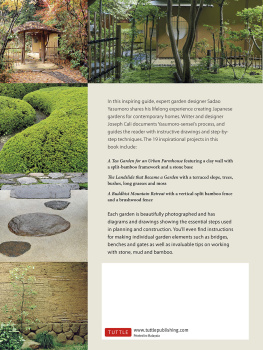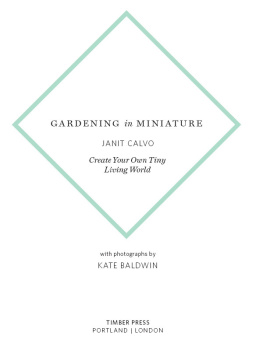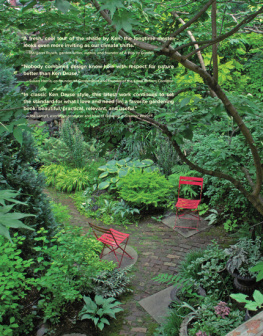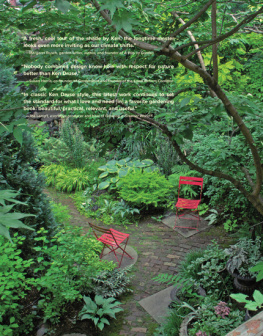Copyright 2017 by Marianne Willburn
All rights reserved. No part of this book may be reproduced in any manner without the express written consent of the publisher, except in the case of brief excerpts in critical reviews or articles. All inquiries should be addressed to Skyhorse Publishing, 307 West 36th Street, 11th Floor, New York, NY 10018.
Skyhorse Publishing books may be purchased in bulk at special discounts for sales promotion, corporate gifts, fund-raising, or educational purposes. Special editions can also be created to specifications. For details, contact the Special Sales Department, Skyhorse Publishing, 307 West 36th Street, 11th Floor, New York, NY 10018 or .
Skyhorse and Skyhorse Publishing are registered trademarks of Skyhorse Publishing, Inc., a Delaware corporation.
Visit our website at www.skyhorsepublishing.com.
10 9 8 7 6 5 4 3 2 1
Library of Congress Cataloging-in-Publication Data is available on file.
Cover design by Jane Sheppard
Cover photos: Marianne Willburn
Print ISBN: 978-1-5107-0912-6
Ebook ISBN: 978-1-5107-0913-3
Printed in China
To my father
Who has cultivated a spirit of profound contentment and
gratitude for as long as I can remember.
And my mother
Who taught me how to grow a bean, harvest a bean, cook a
bean, and can a beanand still doesn't think she
knows what she's doing out there.
CONTENTS
PROLOGUE
O nce upon a time, there lived a gardener. She did not have the largest of gardens, nor the rarest, yet her garden gave her joy and inspired many to become gardeners themselves. One day, proud of her little oasis wedged tightly between the yards of her suburban neighbors, she decided to attend a high-profile garden tour and glean a few ideas off the creativity and budgets of other gardeners.
The sheer lavishness of the first two gardens surprised and delighted her, but by the third, green envy had begun to prick at her heart. By the fourth, she found herself staring not at the incredible rock garden, but at the finely manicured nails of her hostess as the woman painstakingly explained that the tufa boulders had been sourced and transported from Michigan quarries thousands of miles away.
The hands connected to those fingernails showed no sign of tufa damage, and our gardener hid her own chapped hands behind her back when her hostess complained of having very little help in the gardenonly two staff gardeners three days a week.
Perhaps our gardener was a little sensitive that day on account of the car needing work and her daughter needing braces, but she found herself losing concentration. She passed through a knee-high forest of white and violet allium underplanted with forget-me-nots and promptly forgot them. The raking sunlight had turned the magnolia blossoms translucent, which in turn lit up the field poppies at their feet, but she had stopped paying attention by then.
Instead, mental calculations had begun, and she unhappily heard herself asking another visitor the dangerous, age-old question that helps us all determine our pecking order in this world, What does she do for a living?
She didnt like the answer, which neatly played into all the stereotypes regarding wealth she had ever held, but after a restorative glass of pinot grigio in a nearby caf before the next tour, she decided she had a choice to make.
If she was foolish, she could spend the rest of the day comparing her tiny resources to those of her hostessending with an envious wine-fueled rant at dinnertime upon the inequities of this world and the reasons why Marie Antoinette didnt see her thirty-eighth birthday.
But if she was smart, shed pull out her camera, pull out her notebook, and start paying attention.
And then shed go home and write a book.

INTRODUCTION
C reating the garden that lives somewhere deep inside you is difficult when you honestly assess your living situation and it bears no resemblance to the well-structured fantasy you constructed at the tender age of twenty.
In October of 2008, the world changed drastically. And it changed so drastically that even gardeners, with our hearts firmly in the soil but our financial heartbeats tied to mortgages, loans, retirement accounts, and investment strategies, had to dust off our hands and pay attentionjoining millions of others in the feeling that we were not actually in control of our financial destiny.
Good decisions we might have made, such as fully funding those retirement accounts, or taking out a smaller mortgage than we could afford, suddenly became bad decisions as the job and stock markets plummeted and options became scarce. Now we had very little to show for years of saving. Now we couldnt afford to move out of the starter home we had thought was such a good investment just a few years before.
Now we had to adjust our dreams. Some of us just plain lost them.

My husband and I both grew up in the country, and as children we enjoyed the pleasures of rural living and the luxury of space. My parents were avid gardeners, who, in turn, imparted that love to their children.
However, young adults cant be told how good theyve got it. In pursuit of education, jobs, and the age-old draw of big city excitement, we moved to large cities with tiny homes and tinier gardens only to spend the next twenty years trying to beat a path back to sanity.
My first garden was a two-by-seventeen-foot strip in a parking lot that provided tomatoes but elicited chuckles from my Southern California twenty-something friends. My second garden consisted of two large window boxes and an arrangement of wildly sophisticated, yet continuously stolen, pots in a dodgy South London neighborhood. When we moved back to America and I started to landscape every inch of our tiny rental garden in a small suburban neighborhood, my husband announced it was time to grow up and buy a house.

My first strip garden. Most of my twentysomething friends were too busy stripping to notice.
We did, and we bought well within our means, ignoring the pleas of our realtor to buy something that matched our income or even pushed it a little bit. Sure we wanted the eighteenth-century Federal home with bank barn and ten acresjust like anyone else who had dreams and subscriptions to posh gardening magazinesbut we felt that if we moved carefully and frugally we might have a better chance of attaining that dream in the future.
The house was small, drafty, and run-down, but the gorgeous country acre was a paradise to hands that ached to create something of their own. Sadly, those hands had about eighteen months to plant a dogwood, sketch some plans, and play in the dirt between diaper changes before paradise was lost in a surprise corporate layoff. One step forward, two steps back.
We sold the house, circled the wagons, and put our massive student loans into forbearance, rapidly erasing all the headway wed made on principal in the previous two years. After a year of tirelessly job hunting, a brief stint on food stamps, and serious plans to go home and live with my parents with two kids in tow, my husband took a significant pay cut to secure a job in another county. In time, we managed to purchase another small fixer-upper in a little town on a commuter train line.

















